 |
Month of March, in
the Year of Grace, 2010
|
|
"And when these things begin
to come to pass, then look up, and lift up your heads; for your
redemption draweth nigh." (Luke 21:28) |
The Hidden
Aramaic Enoch Scroll
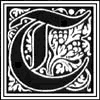 here
is probably a complete Aramaic, over 2000 years old copy of the
Book of Enoch, both on microfilm, and, therefore, also preserved as a scroll, hidden away somewhere.
here
is probably a complete Aramaic, over 2000 years old copy of the
Book of Enoch, both on microfilm, and, therefore, also preserved as a scroll, hidden away somewhere.
Here's what I've found on the net about this.
THE STORY begins in 1990, during the
Kuwait crisis, as fears for a major war in the Middle East meant
that people who sat on valuable antiquities wanted to sell them.
"The Enoch microfilm"
This is from an interview in 1994 in
Biblical Archeology Review, with John Strugnell, one of the DSS
editors. (DSS = Dead Sea Scrolls.) The interview is about events
that happened in 1990.

"John Strugnell's
important work on the Dead Sea Scrolls started in 1954 when he
was a graduate student at Oxford, and continued throughout his
lifetime. He came to Harvard Divinity School as a visiting professor
in 1966. In 1968, he was named Professor of Christian Origins,
the title he held until his retirement in 1996. He died on November
30, 2007, at the age of 77."
Hershel Shanks: There’s this strange story that’s
been in the papers, that at one point two prostitutes, one Jewish
and one Arab, came to you at the École Biblique [the French
School in Jerusalem] and, I believe, took you to a field outside
of Bethlehem where they removed from their private parts microfilms
of Dead Sea Scrolls, one of them being the complete book of Enoch.
Is that true?
John Strugnell: [laughs] Well, there are a lot of mixed elements,
bits of which are true, but bits of which are false.
HS: Could you tell us the story?
JS: There was a whore. [Removing colorful accretions, there were
women messengers of uncertain profession who showed me a microfilm
- not at the École Biblique nor even in Jerusalem.] Now
the incident in the field outside Bethlehem belongs to a completely
different story.
[...]
JS: ... And then I, myself, saw one - the Enoch microfilm; but
I must save that story for my memoirs.
HS: This is the story about the prostitute.
JS: Yes. So I wouldn’t be surprised if there were five other
manuscripts from Cave 11 sometime to be found in the near future.
I wouldn’t be overwhelmed if there were seven or eight. If
none ever came to light, I would wonder who on earth had been
having these hallucinations, or why they are being held back.
HS: Are you currently working on trying to purchase or acquire
these scrolls?
JS: Yes, we’ve got people interested in it. But after the
big upheaval in Kuwait, things settled down, and the urgency of
trying to get rid of this material evaporated.
HS: You tried to acquire it during the Kuwait crisis?
JS: That was when it was shown to me.
HS: And how did you communicate with the owner? Did you meet him?
JS: Yes.
[...]
HS: You’re still working on it?
JS: Oh, yes. And there are two or three serious projected buyers.
But as I said, to me the most important thing is not just that
there are projected buyers of that one manuscript, but the fact
that it’s highly likely that there should be three or four
others. -
From An Interview with John Strugnell, July/August
1994.
___
"A complete copy of Enoch in Aramaic has already been
found"
A Christian forum on the net reproduces
an extract from a book published in 1992, which tells more about
the background.
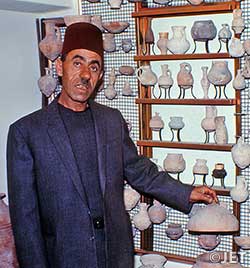
Antique dealer "Kando"
"Avi Katzman, in Understanding the Dead Sea Scrolls,
on p. 262, reports a complete copy of Enoch in Aramaic has already
been found.
"Regarding the scrolls, [John] Strugnell claims at least
four other scrolls have been found that have not yet come to light:
'I've seen, with my own eyes, two.' One of the two is a complete
copy of the book of Enoch.
According to Strugnell, Israeli archaeologist Yigael Yadin is
the reason these scrolls have still not come into scholarly hands.
After the Six-Day War, Yadin confiscated the famous Temple Scroll
from a Bethlehem antiquities dealer known as Kando. Yadin paid
Kando $250,000, according to Strugnell (according to Yadin, the
sum was $105,000), to encourage anyone else with scroll materials
to come forward. But this was not enough, says Strugnell: 'Yadin
gave Kando two hundred fifty thousand dollars where we'd offered
Kando one million five weeks earlier. When the owners of the manuscripts
heard that, they just crossed the Jordan River.'
These scrolls, like the Temple Scroll, came from Cave 11 at Qumran,
according to Strugnell. The manuscripts are now 'somewhere in
Jordan. Various people own them. Several of them have been sold
to big bankers. They're investments for these people. There's
no point in forcing a sale. If they really need cash — as
one seems to now — I have the money.'
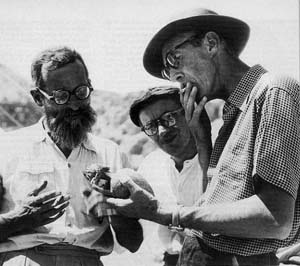
Gerald Lankester Harding
"As for the other two scrolls — the ones Strugnell has
not seen — '[Lankester] Harding [the director of Jordan's
Department of Antiquities] on his death bed told me he'd seen
three, only one of which I've seen — so that makes four.'
"Strugnell is not concerned that the scrolls may deteriorate
before scholars can look at them: 'They're all being kept very
carefully; no one need worry about them. They're a better investment
than anything on the Israeli or the New York stock exchanges,'
he added."
In this light consider the following from Michael Wise, in A New
Translation - The Dead Sead Scrolls, p. 279:
'No trace of the Parables of Enoch has been discovered at Qumran,
and it is widely considered today to be a composition of the later
first century C.E. If a pre-Christian copy of the Parables were
ever discovered, it would create a sensation, since it is the
only text besides the Christian Gospels that uses the title 'Son
of Man' for the heavenly Savior of Israel."
http://www.christianforums.com/t5411386-12/
(Sept. 2008)
___
"The Angel Scroll"

Is the "Angel Scroll"
one of the missing manuscripts?
After that it was apparently quiet for
a few years, and so in 1999, new data appears, and rumors, of
a scroll "similar to" the contents of the Book of Enoch.
This is obviously a different manuscript than the Book of Enoch,
but nevertheless very closely related, in the same tradition,
and therefore very likely from the same collection, and possibly,
the same owner, as the hidden Aramaic Enoch scroll.
"Statement by Stephen J Pfann on "the Angel"
Scroll in the Jerusalem Report, 27 Sept 1999."
"Four months ago I was approached by a senior writer from
the Jerusalem Report, Netty Gross, and was asked if I would help
verify the existence of a Dead Sea Scroll manuscript which had
not been published previously.
I was aware of a story, known by other scholars, that there was
at least one rather well-preserved scroll which had made its way
to Europe and which was similar to the Book of Enoch or Jubilees.
This may be identified as the source of a scroll fragment examined
by Prof. John Strugnell sometime in 1967-1968 which he described
elsewhere as something "resembling the Book of Enoch".
The scroll discovery at hand was already known at least as early
as 1974 and may have actually been discovered in the mid-to-late
1960's. If its authenticity could be verified, its similarity
in content to writings of the Enochic tradition would posit this
as being either similar to or identical to the elusive scroll
of Europe."
http://www.uhl.ac/benpadia.html
...
THE MENTIONED Angel Scroll is not the same as the one Strugnell
saw on microfilm, as it was a complete copy of the Book of Enoch,
and, as is shown in the texts above, the time when he saw it was
during the Kuwait crisis, ie 1990-91. The contents of the Angel
Scroll are further described on the page the link points to. Of
value here may be the information that another scroll had been
sold to someone in Europe (the bankers mentioned by Strugnell?).
It is not entirely clear whether it is the Enoch scroll, the one
Strugnell said was in Jordan, or one of the others mentioned,
unnamed scrolls.
Unfortunately Strugnell died in 2007, and any memoirs have
not come out, so there will probably be no more information from
him, unless there are left behind material that will be published
posthumously. Anything more about the Angel Scroll has not emerged.
___
"Regarding the new Enoch papyrus fragment"
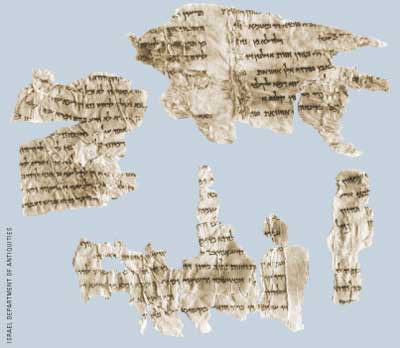
An Enoch fragment.
A few more years go, and in 2004, something
happens again. A papyrus fragment of the Book of Enoch has been
found, which is unusual, because most earlier found DSS fragments
were made of parchment. It means that the Book of Enoch was published
in both papyrus and parchment. It also means that the number of
the various editions of the Book of Enoch, found among the DSS,
increases. Which is showing its importance (and distribution).
The following is from the blog PaleoJudaica in October 2004,
and begins with a quote from a list of all known references to
the desirable Enoch scroll:
- "P. Ross in Scientific American, vol. 263 no 5 (Nov.
1990) refers to "a nearly complete scroll", but doesn't
state if it is of Enoch or another book.
- A. Katzman in Biblical Archeology Review, vol. XVII no.
1 (Jan.-Feb. 1991), p.64,70 mentions a "complete copy of
the Book of Enoch".
- H. Shanks interviewing Strugnell in Biblical Archaeology
Review, vol. 20 no. 4 (July-Aug. 1994), p. 46-47 mentions "the
complete book of Enoch" on microfilm and in a rather mixed
up conversation also mentions Cave 11.
- N. Silberman in The Hidden Scrolls: Christianity, Judaism
& the War for the Dead Sea Scrolls (New York: Putnam and
Sons, 1994), p.162 mentions "a complete manuscript of the
book of Enoch".
- Pfann in a web article, The Visions of Yeshua Ben Padiah
Scroll, (1999) mentions a "rather well preserved scroll
... resembling the book of Enoch". It is not clear if this
is the same MS as the other Enoch MS which is mentioned by Shanks
as being seen by Strugnell on microfilm, rather than the actual
MS."
"If the above is representative of Strugnell's Enoch
scroll, it is unlikely to be the same as the papyrus fragment
of Enoch to be published by the Eshels, as Strugnell's Enoch is
complete or nearly compete. [However --- what if the photograph
provided to the Eshel's is just a sample, perhaps provided by
a seller/vendor to test the market or create anticipation so as
to inflate the market? This is of course, just my speculation.].
Prior to seeing the post in PaleoJudaica, I had not heard of this
papyrus fragment. It was new to me too.
As for the last reference, follow the link for Stephen Pfann's
website on the Ben Padiah (Angel) Scroll. Five years after the
partial transcript surfaced, this document - if it exists at all
- has not been published or, as far as I know, even shown to a
specialist. The mention of the rumor about an Enoch scroll is
near the beginning of the "Background" section of the
web page.
UPDATE (19 October): Seth Sanders reminds me that he e-mailed
the following a few days ago, referring to the same text:
'I assume you recall the excitement over the last "other
Qumran manuscript of Enoch", the so-called "Angel Scroll"
story of 1999. Like this putative Enoch fragment, it was not presented
to scholars to examine. Of course, in that case it was even more
dubious because there was not even a photograph. [...] We have
not heard anything further about this text. The problem, as you
know, is that you or I or any other linguistically trained scholar
of Second Temple Judaism could produce such a scroll, given enough
Chutzpah and the help of a competent manuscript forger. It could
certainly be proven to be genuine (and I hope it is!), but I think
the burden of proof is on those arguing for its authenticity.'
[...] As usual with these things, the authenticity question really
needs to be sorted out in the peer-review journals.
As for forging a scroll fragment like this, it would not be easy
to come up with something that would stand up to C-14 dating.
But perhaps it could be done."
http://paleojudaica.blogspot.com/2004_10_17_archive.html
...
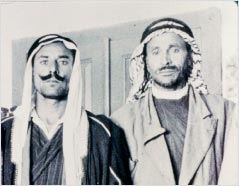
Bedouin goatherd Abu
Dahoud (to the right), who discovered the first Dead Sea Scrolls.
Photo: John C. Trever.
In the book "The Hidden Scrolls" mentioned above,
the following interesting detail is found:
"There are those that will swear to this day (John Strugnell
is one of them) that they were shown by bedouin a complete manuscript
of the Book of Enoch..."
The statement is quite strong, and makes it really likely that
there is a preserved Aramaic Enoch scroll. Several people say
they have seen it, and it is owned, or has been owned, by Jordanian
Bedouins.* Either it is still in their or their relatives' hands,
or it has been sold to some banker in Europe (a detail that can
really call for speculation, when we know which societies rich
bankers often are included in).
* In a movie about the DSS, it is stated that the Bedouin who
found the first scrolls, in Cave 1, is the same man who found
Cave 11, the cave Strugnell says the Enoch scroll came from. It
is also the cave that yielded several of the best preserved scrolls.
The Bedouin says that he and his friends sold the scrolls to several
people, including Kando.
___
"More 1 Enoch from the Qumran Library!"
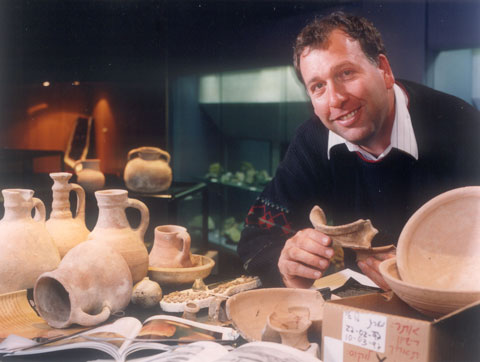
Hanan Eshel
In the same blog now follows more details
about the new papyrus fragment:
"Gabriele Boccaccini e-mails:
A New Fragment of Enoch found at Qumran"
"In March 2004 Esther and Hanan Eshel received for publication
a photograph of a fragmentary papyrus preserving five lines identifiable
as the end of Enoch 8 and the beginning of Enoch 9 (8:4-9:3).
The new fragment can be dated approximately to the Hasmonean or
the early Herodian era (50-25 BCE) and was undoubtedly found at
Qumran. As we cannot identify the cave, we suggest this fragment
be labeled XQpapEnoch. Because the only Enochic book written on
papyrus is the Book of Giants from Cave 6, 6QpapGiant (=6Q8),
which is written in a different semi-cursive later hand, it appears
that this fragment is the first to be published from an additional
copy of Enoch.
The verses in question describe how the angels heard the cries
of the people killed as a result of Asa'el's teaching humans to
make weaponry. The publication of this new fragment of Enoch is
important not only as a witness to an additional manuscript of
Enoch found at Qumran, but also because of its contribution to
the reconstruction of two Cave 4 manuscripts (4QEna and 4QEnb).
Despite their poor preservation, it is possible to read and reconstruct
in the three witnesses to the Aramaic a similar, if not identical,
text.
This version differs from the Greek translation found at Gizeh,
which has scribal errors and various omissions. Even though Syncellus'
versions also contain corruptions, it appears that the Greek cited
by Syncellus is the closest to the Aramaic source.
The article which includes the new fragment was submitted for
publication in DSD [the journal Dead Sea Discoveries] in the beginning
of May 2004. On Oct 11, 2004, the fragment was discussed at the
University of Michigan by a panel composed by Profs. Gabriele
Boccaccini, James C. VanderKam, Esti Eshel and Hanan Eshel, and
will be presented again at Camaldoli during the Third Meeting
of the Enoch Seminar (6-10 June 2005)."
"Quoted with the permission of Boccaccini and the Eshels.
There have been rumors for many years of the existences of another
Qumran Aramaic manuscript of 1 Enoch. I wonder if this is it and
if there's any more of it out there somewhere."
Oct. 15, 2004. - http://paleojudaica.blogspot.com/2004_10_10_archive.html
___
"News on the new Enoch fragment"
"Monday, November 22, 2004
Yesterday evening after the Qumran session, Esther and Hanan Eshel
gave an impromptu presentation on the new 1 Enoch fragment, whose
story broke on PaleoJudaica some time ago. They are calling it
XQpapEnoch, since they are confident it comes from a Qumran cave,
but they don't know which one, and (unusually for a Qumran scroll
and uniquely for a Qumran Enoch manuscript) it's written on papyrus
rather than leather. It contains the damaged Aramaic text of 1
Enoch 8:4-9:3, a passage that tells how the archangels looked
down from heaven on the corruption of the earth before the Flood,
and it allows us to correct one of Milik's reconstructions since
the word in question survives on this papyrus. The correct reading
or something very close to it was conjectured by Loren Stuckenbruck
(of Durham University) some time ago, before this fragment was
discovered. (Well done, Loren.)
The fragment belongs to the Kando family. (Kando was an antiquities
dealer who brokered the original Dead Sea Scrolls acquistions.)
The Enoch papyrus is one of 12 unpublished fragments owned by
them. The Eshels have seen infra-red photos of 6 of these. Five
are biblical fragments from three already known manuscripts: 4QIsac,
4QGenf, and 8QGen. The other six look like "black corn flakes"
and are now on tour in the USA in the From the Dead Sea Scrolls
to the Forbidden Book exhibition. The Eshels haven't seen the
fragment in person yet but they are confident enough of its authenticity
to publish it now. They passed around a photo of the text during
the lecture and Moshe Bernstein promptly challenged one of their
readings. Scholarship in action.
There are also rumors that another fragment of the same manuscript
exists."
http://paleojudaica.blogspot.com/2004_11_21_archive.html
...
AFTER THIS there doesn't seem to have
been anything more said about the Enoch Scroll.
So it was unrest in the area that made the then owner to look
for buyers in 1990. If the family still is in possession of the
scroll, the same thing might possibly happen again, at some future
event. If the scroll is sold to Europe, the matter is quite different.
One can imagine several reasons why someone in Europe would like
to prevent this scripture from reaching the public.
Here you could get into who are the right owners of the scroll,
and to whom it is intended, but I'll have to leave that for now.
This information has to be settled first.
_______
This article is translated from
a Swedish article
published on the internet in 2010.
There is also a smaller version of the article contributed to
English Wikipedia.
___
Learn more about the Book of Enoch,
in
BOOK OF ENOCH INTERLINEAR
Only
Jesus
saves us from the coming
wrath


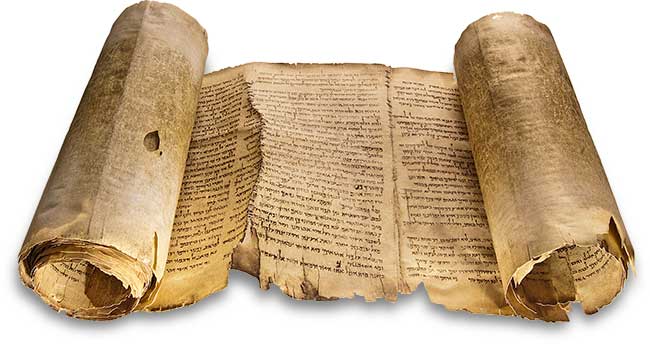
 here
is probably a complete Aramaic, over 2000 years old copy of the
Book of Enoch, both on microfilm, and, therefore, also preserved as a scroll, hidden away somewhere.
here
is probably a complete Aramaic, over 2000 years old copy of the
Book of Enoch, both on microfilm, and, therefore, also preserved as a scroll, hidden away somewhere.





